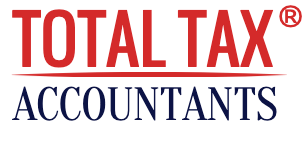
CIS VAT Reverse Charge:
HMRC extends its new regime to the Construction Industry Scheme (CIS) by introducing VAT reverse charge- a changed way the VAT is collected in the building and Construction industry. The aim is to combat the fraudster in charging VAT and go missing without paying it over to authorities. It will come into effect on 1 October 2019 and will require customers receiving the service to pay the VAT due to HMRC instead of paying from the supplier. The important difference between reverse charge and CIS is that the former applies to the whole service, however under CIS, payments to sub-contractors are allotted without any deductions made on the material content.
How does CIS VAT reverse charge works?
The reverse charge implies the customer receiving the specified services needs to pay the VAT to HMRC rather than the provider. However the customer can recoup the VAT, following the normal rules for VAT recovery.
Services it will apply to:
The said regime will apply to:
- Supplies of specified services between VAT registered businesses which are the services defined as construction operations for the purpose of the Construction Industry Scheme (CIS).
- If any of the services in a supply are liable to the reverse charge, every single other service (which will be exempted if otherwise being supplied as a single service) will likewise be liable to it.
- Labour and material supplies charged at reduced or standard rate VAT.
- Businesses that are VAT registered in CIS supply chain.
Basically, every organisation registered under Construction Industry Scheme (CIS) and those invoicing a client/customer that isn’t CIS registered must charge VAT at a normal rate. Contractors or sub-contractors providing services to larger contractors or working through a recruitment agency or umbrella company are going to be mainly affected.
Services excluded:
The domestic reverse charge does not apply if the services offered are zero rated for VAT or if the customer itself is not registered for VAT in the UK, normal VAT rules apply in such cases. However, if you are not VAT registered, it should be made clear to the supplier in writing. End users and intermediary supplier businesses are also exempted under this along with employment businesses engaged in supplying staff and in charge of paying the temporary workers supplied.
Things need to do after implication:
- As a contractor you need to review supplies made and received from VAT registered contractors.
- Obtaining VAT registration and CIS status from customers and whether or not they are an end user.
- Impact on cash flow and if there is any approach to alleviate this.
- Ensure your accounting systems and software are updated to deal with the reverse charge.
After the VAT reverse charge comes into effect, invoices should clearly indicate that the reverse charge mechanism has been applied and that the customer is required to account for the VAT.
HMRC comprehends that executing the reverse charge may cause trivial issues and will apply a light touch in managing any errors made in the initial half-year of the new enactment, as long as you are attempting to follow the new enactment and have acted in accordance with some basic honesty.
Penalties will only be considered if one is purposefully exploiting the measure by not representing it effectively.
Read more about how to become VAT registered business here
We are here to help. Click here to speak to our expert tax accountant who can help you.


